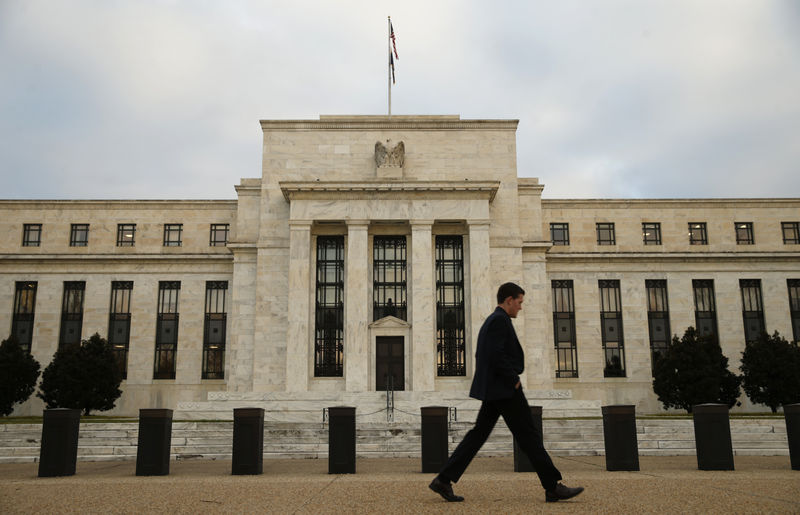By Richard Leong
NEW YORK (Reuters) - In the spring of 2014, Mizuho Securities USA's chief economist Steven Ricchiuto planted his flag for the projected date of the Federal Reserve's first post-crisis rate hike in mid-2016, further into the future than any of his peers.
And he never budged.
Virtually alone among major Wall Street house economists at the time, Ricchiuto was sceptical of the conventional wisdom that lift-off would happen by the end of 2015. He argued that even a modest rise in rates would slow an economy dogged by inconsistent growth and drive inflation further below the Fed's own target.
Up until Dec. 15, the day before the Fed did ultimately deliver its rate rise, about six months ahead of his forecast, Ricchiuto told Reuters the central bank might surprise investors by not hiking to avoid harming the economy and financial markets.
"I thought they weren't going to do it because cooler heads would prevail at the Fed," he said in an interview this week.
The historic rate move on Dec. 16 "was very, very stupid," he said.
While his assessment was blunt, his no-hike view had been shared by former U.S. Treasury Secretary Larry Summers, Nobel Prize laureates in economics Paul Krugman and Joseph Stiglitz and noted bond investor Jeffrey Gundlach.
Ricchiuto's original prediction was closer to the mark than the vast majority of economists at the 22 primary dealers, the big banks allowed to transact directly with the Fed. Most shifted their expectations for the timing of the rise from early in 2015 to later in the year, with some even pushing their bets into 2016, where Ricchiuto had been all along, only to reverse course when the Fed made its intentions obvious.
And he is not ready to ditch his contrarian view.
Ricchiuto, who took over as the bank's top economist in September 2008, just as Lehman Brothers was imploding and the financial crisis erupting, thinks the Fed has just one more rate increase in its near future before it calls it quits and reverses course.
"They will go another 25 basis points and will be stuck there for a long period of time," the 58-year-old said.
Other Wall Street economists reckon Fed Chair Janet Yellen and voting members of the Federal Open Market Committee will raise rates at least twice in 2016, about the same as what futures contracts are predicting. The Fed, by contrast, currently sees four hikes, based on its latest rate forecasts.
Ricchiuto, however, predicted the Fed would have to backtrack and to begin cutting rates, similar to what happened with the European Central Bank in 2011 as it was dealing with the euro zone debt crisis.
Rather than cutting rates to help the euro zone economy, the ECB, led by then president Jean-Claude Trichet, had raised policy rates twice that year, which later proved to be a mistake that some analysts blamed for prolonging the crisis.
Now with Mario Draghi at the helm, the ECB's key policy rates are in negative territory and the bank has adopted quantitative easing to combat deflation.
Despite the slowdown in U.S. domestic manufacturing due to sluggish global demand and modest growth in consumer spending, the Fed may raise again in March or April, according to Ricchiuto, who said the Fed has set the bar fairly low to hike rates again.
"Would the data allow for it to happen? I don't know," he said.
